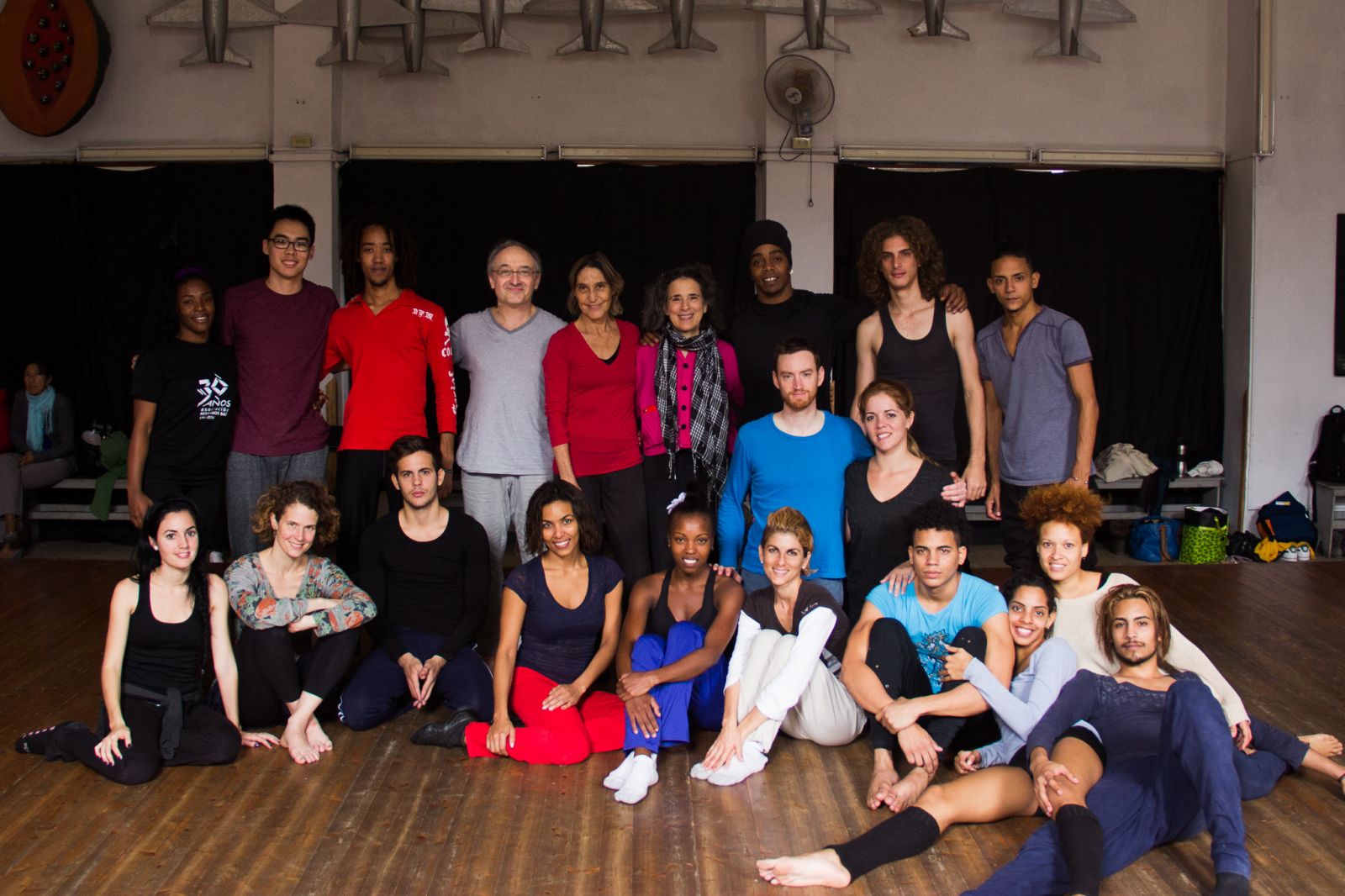TDPS Dance Professors and alumni take a trip to Cuba
March 01, 2016

In February 2016, TDPS Dance professors Sara Pearson and Patrik Widrig (of PEARSONWIDRIG DANCETHEATER) took a trip to Cuba with TDPS Dance alumni and collaborators Graham Brown (MFA Dance), Lindsay Gilmour, and Jonathan Hsu (BA Dance).
In February 2016, TDPS Dance professors Sara Pearson and Patrik Widrig (of PEARSONWIDRIG DANCETHEATER) took a trip to Cuba with TDPS Dance alumni and collaborators Graham Brown (MFA Dance), Lindsay Gilmour, and Jonathan Hsu (BA Dance). They worked with 16 professional Cuban dancers from different companies in Havana—representing folklórico, contemporary, ballet, and Afro-Cuban styles.

Dancers from the residency in Havana, with the PEARSONWIDRIG group
The idea to travel to Cuba for a dance collaboration was planted 25 years ago in Mexico City, at an international dance festival organized by the Instituto de Bellas Artes. There, Pearson and Widrig met Rosario Cardenas, founder/director of the Cuban experimental modern dance company Danza Combinatoria, who invited them to Cuba to start an artistic collaboration.
This year, Pearson and Widrig organized the trip with dancers with the help of a successful Kickstarter campaign. They planned to create some site-specific collaborations with the resident companies over the course of the 10-day trip. They held workshops with the companies, taught primarily by Pearson and Widrig, in which they played with improvisational techniques and worked to expand movement languages through collaboration. With few Spanish-speakers in their group, language was a barrier that challenged the dancers to explain ideas and concepts through movement and gestures.
Pearson noted the real enthusiasm and “hunger” of the Cuban ballet- and modern-trained dancers to expand their dance experience through this type of cross-cultural collaboration. All involved experienced some element of discomfort when faced with new challenges, but that only inspired the dancers to respectfully push outside of their comfort zones.
Within the experimental contemporary movement frame that Pearson and Widrig created for these workshops, they noticed a tendency towards urban dance forms in Cuba (including break dance, hip hop, and especially salsa). Dancer Jonathan Hsu even joined in an impromptu street “cypher” (a freestyle urban dance circle for trading ideas/moves), which brought the dance experience outside of the studio and into the streets of Havana. All of the dancers on the trip with Pearson and Widrig noticed some element of change—of “Cubanness”—in their own movement vocabulary as a result interacting with the Cuban dancers, the Cuban Spanish language, and with the Cuban landscape itself.
In addition to teaching intensive workshops and giving an informal performance—which included examples of their choreography, as well as workshop explorations with the Cuban dancers—Pearson and Widrig’s goal was to research historic buildings in Old Havana where they could create a site-specific dance. While every street offered a feast of architectural crumbling splendor, the company fell in love with San Salvador de la Punta, a 16th-century fort, replete with hidden staircases, vaulted ceilings, mysterious tunnels, and a cobblestone courtyard with numerous balconies. A couple of days of creative play in the space resulted in a feast of ideas to explore, but as the fort is currently undergoing renovations, they will need to return for a second trip to Cuba to realize their vision. Stay tuned!
The dancers put on a final performance, which included phrases plucked from technique classes, improvisational structures, and even Cuban salsa dancing to Mozart. The dancers with Pearson and Widrig also performed parts of “rapture,” the choreography that PEARSONWIDRIG staged at the Clarice Smith Performing Arts Center last November.
Jonathan Hsu documented the trip with photographs that highlight the vivid colors and architecture of Cuba. The motion that he captured in his photography hints at the inspiration for creative and expansive movement that the dancers experienced:

Knife sharpener working in the streets

Lindsay Gilmour and Patrik Widrig dancing in Old Havana

Sara Pearson working with the dancers at San Salvador de la Punta

Walking along the Malecon in Havana

Mini taxi navigating the streets of Havana

Bicycle taxi

A royal palm, the national tree of Cuba
By Kate Spanos

